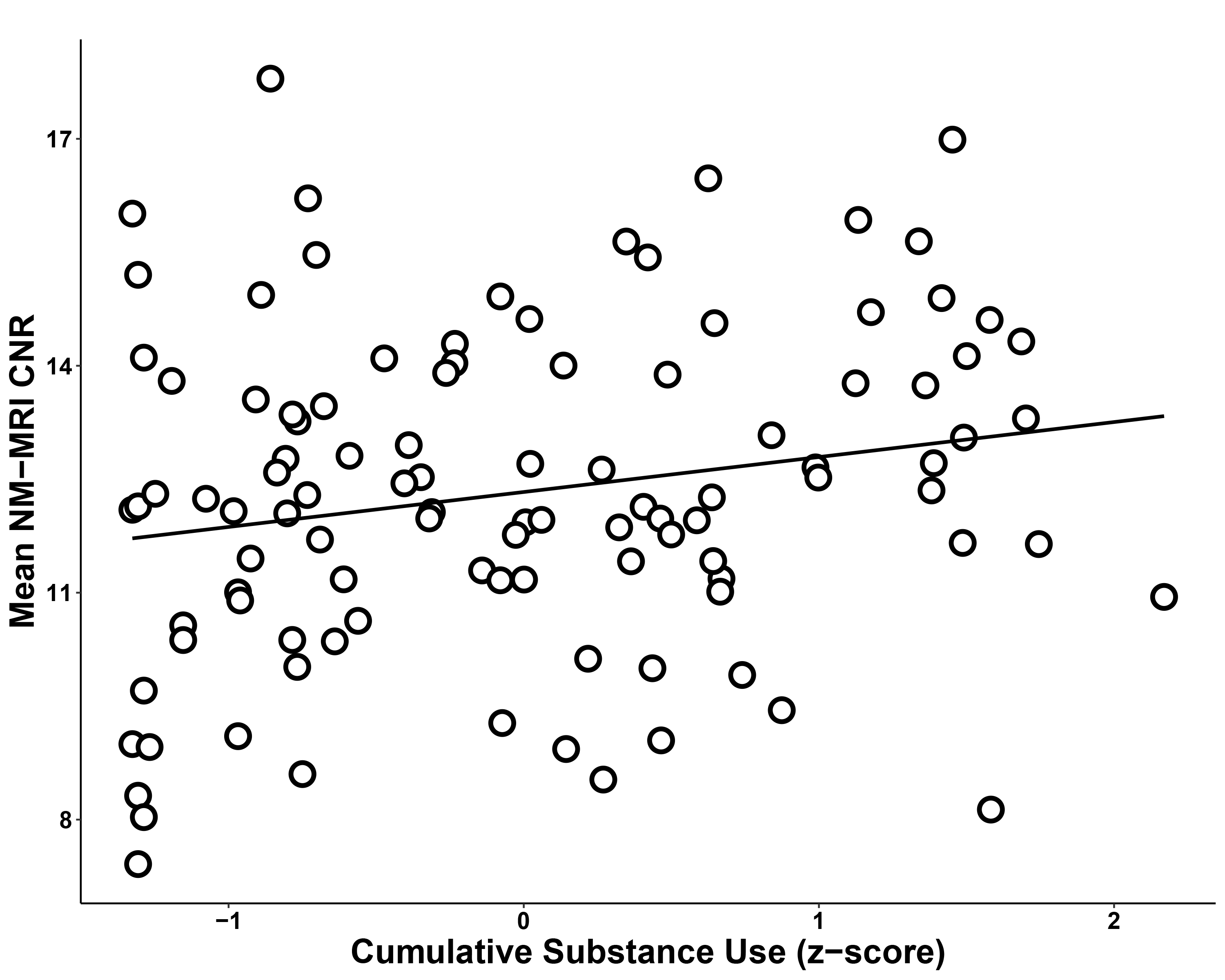The research involved 135 individuals, 105 women and 30 men. Neuromelanin accumulates naturally in areas of the midbrain where the neurotransmitter dopamine is produced. Dopamine plays important roles in many cognitive and bodily functions and is central to the reward/motivation system in the brain. Dopamine can be difficult to study in young people. This has hindered researchers’ understanding of early stages of certain neurological diseases and mental health conditions, such as adolescent-onset addictive behavior. However, neuromelanin accumulation in young people can be safely and easily studied using neuromelanin-sensitive MRI.
“Young adults who regularly engage in substance use appear to show greater than normal levels of neuromelanin accumulation on this type of MRI scan, especially young women,” says Greg Perlman, PhD, Assistant Professor of Psychiatry and Behavioral Health and Lead Author.
“This is important because much of the biomedical research on the effects of drug and alcohol use on the dopamine system has examined older adults after years or decades of chronic substance use. In contrast, there is very little information about the dopamine system in adolescent or young adult populations after just a few years of habitual alcohol and drug use. The potential of neuromelanin-sensitive MRI to provide new insights about the health of the dopamine system in young people was a key motivation for our study.”
Perlman indicated that the association between substance use and neuromelanin MRI signal was especially strong in certain midbrain regions of young women, such as the ventral tegmental area. In addition, increased neuromelanin was associated with substance use generally, but not with use of one type of drug.
The research team is currently conducting a new study using neuromelanin-sensitive MRI in teenagers ages 14 to 17 to better understand neuromelanin accumulation over those three years of life. The study will use yearly MRI scans to evaluate the effect of life experiences reported by teenagers, such as alcohol use, social media use, and stressful events, on neuromelanin accumulation measured by neuromelanin-sensitive MRI.
The work is supported in part with funding from the National Institute of Health’s National Institute on Drug Abuse.
###



